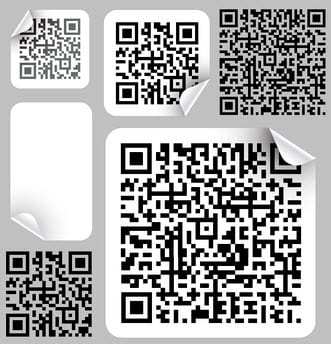With more than 50 percent of Americans carrying smartphones, according to a report by Chetan Sharma Consulting, QR codes AKA Quick Response codes are fast becoming the best way to bridge online and print communications. They are not just a marketing tool. They are a unique communication tool. QR codes are free to generate, and can be printed and displayed almost anywhere, on anything, anytime. They can also quickly and easily disseminate information directly to people who want it, as Marketing Land explains. It’s a nearly perfect medium for colleges and universities to link their school resources with students, alumni, parents, and benefactors.
Register Prospective and Accepted Students for Events
Help prospective and accepted students register for events and avoid missing out on important activities such as registering for classes, workshops for financial aid, visiting guest speakers, or any event sponsored by the school. Colleges that put QR codes in event flyers or brochures enable readers to quickly and easily register online when they read about events, instead of putting a flyer into a pocket or purse to sign up later.
Get Student and Parent Participation in Surveys
Everyone has seen retailers offering the chance to win something if they complete a phone or online survey after making their purchase. It’s either printed on a paper receipt or in a prominent place on the final checkout screen for online orders. Colleges benefit from survey information too but it’s hard to get the attention of busy students or visiting parents. QR codes on fliers at strategic places on campus such as study areas, auditoriums, and recreation centers put your survey request right in front of students and visitors who are already on the go. This makes it convenient for them to take a minute to answer as few as three survey questions.
Connect Students with Professors and Programs
Every school with an online presence has a faculty section, and many college and university professors have their own websites. Special programs and departments may also have their own websites. As Constant Contact explains, QR codes linked to these websites or faculty sections of school websites quickly connect students with beneficial school resources they may not otherwise have known about. Class registration materials with QR codes that link professor and course resources turn that printout of classes into a more valuable source of information.
Let Students and Visitors Instantly Access Your Campus Directory
Even the smallest college campus is a big place for visiting prospective students or new students who may be on their own, away from home for the first time in their lives. The big “you are here” wooden or plastic campus directories, or paper maps of the campus, may help people find where they want to go. However, QR codes that link to your online campus directory, posted on every lamp post across campus, give everyone carrying a smartphone instant access at any point while traversing the school’s property. The QR code can be loaded with additional links to campus security, safety alerts, business hours of college offices and departments, daily weather reports, and other vital information for everyone on campus.
Link Students to Scholarship and Internship Opportunities and Resources
Help prospective students when recruiting at high schools, with QR codes on informational materials pointing them to resources like Collegeonline.org. Instead of relying only on an online and bulletin board listing of scholarship and internship opportunities for students to find, use QR codes placed in the school departments where they are applicable. Put them on flyers in dormitory common areas, and other study or hangout places for the types of students who are eligible and interested.
Pedro Rodriguez
Pedro is a lifestyle branding and marketing consultant for tech upstarts. His passion for technology and advertising as a young chap has come a long way.
